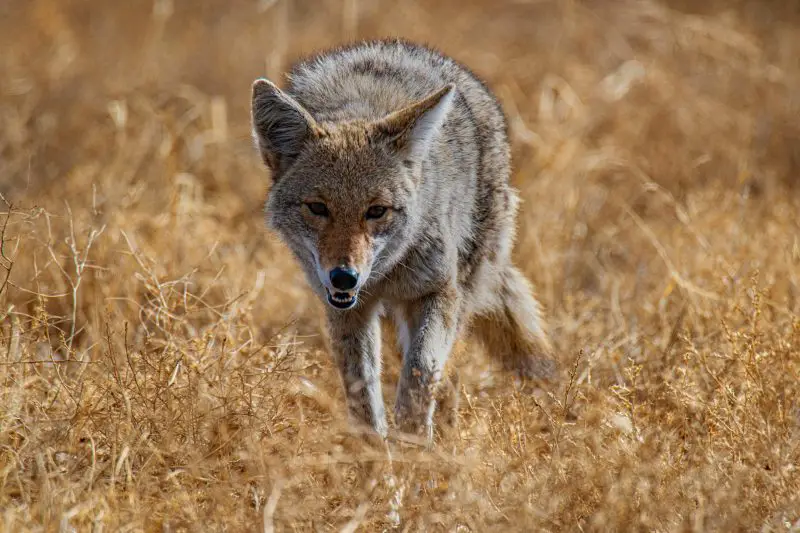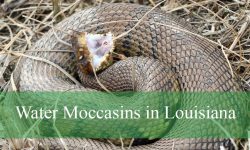California’s vast and diverse landscapes are home to an incredible range of wildlife, from mountain lions prowling the Sierra Nevada foothills to seabirds gliding along the Pacific Coast. Yet among all of these species, few have adapted as successfully—or caused as much debate—as the coyote (Canis latrans). These cunning and adaptable predators roam nearly every corner of the Golden State, from remote deserts to bustling urban neighborhoods.
For decades, coyotes have been both admired and feared. Farmers once saw them as threats to livestock, while city dwellers now encounter them in parks, backyards, and even downtown areas. Their eerie howls echo through canyons at night, leaving many to wonder: just how dangerous are coyotes in California? Do they attack pets or humans, and are they truly thriving even as cities expand?
In this comprehensive guide, we’ll uncover the real truth about coyotes in California—their behavior, habitat, intelligence, and role in the ecosystem. You’ll also learn how to stay safe, coexist peacefully, and understand why this resilient animal continues to thrive in a modern world that has changed so drastically from its wild origins.
What Exactly Is a Coyote?

Appearance and Characteristics
Coyotes are medium-sized canines that resemble small wolves. Adults typically weigh between 20 and 45 pounds, with males being slightly larger than females. Their coat color varies from grayish-brown to reddish-tan depending on habitat, with lighter fur on the belly and throat. Sharp, upright ears and a long, bushy tail tipped in black are distinctive features.
Despite their modest size, coyotes are powerful runners capable of reaching speeds up to 40 miles per hour. They use this agility to chase small prey, evade predators, and navigate the urban and rural environments they inhabit. Highly intelligent and alert, coyotes rely on keen eyesight, acute hearing, and an extraordinary sense of smell to survive.
The Coyote’s Origins
Once restricted primarily to the Great Plains, coyotes have expanded their range dramatically over the last century. They now occupy nearly all of North America—including every region of California, from the Mojave Desert to the redwood forests. Their ability to adapt to human presence and changing landscapes makes them one of the most successful carnivores on the continent.
Coyotes in California: Where They Live
Natural Habitats
Coyotes are true generalists, thriving in a wide range of environments. In California, they inhabit:
- Deserts such as the Mojave and Sonoran regions.
- Mountains like the Sierra Nevada and San Gabriel ranges.
- Coastal zones including Malibu, Santa Cruz, and Big Sur.
- Urban and suburban areas from Los Angeles to Sacramento.
Their flexibility allows them to switch between hunting small mammals in open grasslands to scavenging food scraps in city parks. Unlike many predators that avoid human contact, coyotes have learned to live alongside people—sometimes too comfortably for our liking.
Urban Coyotes
One of the most surprising truths about California’s coyotes is just how urban they’ve become. Sightings are now common in major metropolitan areas, including Los Angeles, San Diego, and San Francisco. Coyotes often use storm drains, golf courses, and greenbelts as safe travel corridors, emerging at dusk or dawn to find food.
Urban coyotes primarily feed on rodents, rabbits, fruit, and garbage. Contrary to popular belief, they rarely depend on pets for food—but they can prey on small cats or dogs left unattended outdoors.
Behavior and Daily Life
Nocturnal but Flexible
Coyotes are most active during the night and early morning hours. However, in areas with little human disturbance, they may also be seen during the day. They are opportunistic feeders and adjust their activity based on food availability and safety.
Communication and Intelligence
Coyotes are famous for their haunting howls, which serve as a complex form of communication. These vocalizations help pack members locate each other, mark territory, and warn rivals. Sometimes, a single howl can sound like many voices—a clever auditory illusion caused by the coyote’s ability to modulate pitch and echo through canyons.
Coyotes are also incredibly intelligent problem-solvers. Studies have shown that they can learn from experience, adapt their hunting techniques, and even remember patterns of human behavior. This intelligence makes them both fascinating and difficult to manage in populated areas.
Diet and Hunting
Coyotes are omnivorous. In California, their diet includes:
- Small mammals like rabbits, rats, and ground squirrels.
- Birds, reptiles, and insects.
- Fruits and berries such as prickly pear, grapes, and figs.
- Carrion and human refuse in urban settings.
Their adaptability in diet ensures survival through droughts, wildfires, and seasonal changes.
Are Coyotes Dangerous to Humans or Pets?
Threat to People
Despite their sinister reputation, coyote attacks on humans are extremely rare. Fewer than a dozen incidents occur in California each year, and most involve food-conditioned animals—those that have lost fear of people due to being fed intentionally or unintentionally.
Coyotes naturally avoid humans and will retreat if given space. Problems arise when they associate humans with easy food sources such as pet food, garbage, or outdoor feeding stations for wildlife.
Threat to Pets
Coyotes pose a greater risk to small pets than to people. Cats that roam outdoors or small dogs left unattended can become vulnerable targets. However, most pet-related incidents occur in the early morning or late evening when coyotes are most active. Pet owners can significantly reduce risk by keeping animals indoors at night, securing yards, and never leaving food outside.
The Ecological Role of Coyotes in California
Nature’s Cleanup Crew
Coyotes serve as natural pest control. They consume vast numbers of rodents that could otherwise damage crops and spread disease. By scavenging carcasses, they also help keep the environment clean and prevent the spread of bacteria and parasites.
Balancing the Ecosystem
As mid-level predators, coyotes regulate prey populations and influence other species’ behavior. When coyote numbers decline, smaller predators like raccoons and feral cats increase—a phenomenon known as mesopredator release—which can harm bird populations and disrupt ecological balance.
Adaptation to Climate and Urban Change
Coyotes have proven remarkably adaptable to climate shifts and urban sprawl. As wildlands shrink, they use city environments as alternative habitats. They den in culverts, underbrush, and abandoned lots, often raising pups within a few hundred feet of human homes without detection.
Myths vs. Facts About Coyotes in California
Myth |
Fact |
|---|---|
Coyotes are disappearing from California. |
False. Their populations are stable or increasing statewide. |
Coyotes hunt humans. |
False. They fear humans and attacks are extremely rare. |
False. They thrive in cities, forests, and mountains. |
|
Killing coyotes solves population problems. |
False. Removing individuals can cause packs to breed more rapidly. |
Coyotes are useless pests. |
False. They play an essential ecological role in pest control and ecosystem balance. |
Coexisting with Coyotes
Safety Tips for Residents
Living in California means sharing space with wildlife. Here are simple ways to coexist safely:
- Secure trash cans with tight-fitting lids.
- Bring pet food indoors and never feed wildlife.
- Keep small pets inside at dawn and dusk.
- Trim vegetation around your yard to reduce hiding spots.
- Install motion lights to discourage nighttime visits.
- Make loud noises or wave your arms if a coyote approaches—this is called hazing and helps reinforce their natural fear of humans.
What to Do If You Encounter a Coyote
If you see a coyote:
- Do not run.
- Maintain eye contact and stand tall.
- Make yourself appear larger by raising your arms or opening your jacket.
- Clap, shout, or use a whistle to scare it off.
- Slowly back away once it retreats.
Never attempt to feed or approach a coyote. Feeding them disrupts their natural behavior and can make them bold or aggressive.
Coyote Reproduction and Family Life
Breeding Season
Coyotes typically breed between January and March. Gestation lasts about 60–63 days, with pups born in spring. Litters average 4–7 pups, depending on food availability.
Family Structure
Coyotes are monogamous and mate for life. Both parents share responsibility for raising the young. Pups remain in the den for several weeks, and by autumn, they begin learning to hunt under the guidance of their parents. Some juveniles leave to form new territories, while others stay with the pack until the following season.
Lifespan
In the wild, coyotes usually live 6–8 years, though some survive beyond 10. In captivity, where threats are fewer, they may live up to 15 years.
Human-Wildlife Conflict and Management
Why Conflicts Happen
Human-coyote conflicts typically occur when coyotes lose their natural fear of people. This can result from direct feeding or easy access to food sources like unsecured trash and outdoor pet food.
Modern Management Approaches
California wildlife agencies focus on education and coexistence rather than extermination. Lethal control often fails because removing coyotes creates population imbalances—surviving members breed more frequently to fill the gap. Instead, officials emphasize deterrence, habitat management, and community awareness.
Research and Tracking
Scientists use GPS collars and camera traps to study urban coyotes in Los Angeles, San Francisco, and Orange County. Research has revealed that coyotes can navigate cityscapes while largely avoiding humans, using green spaces, alleys, and storm drains as safe corridors. These findings help communities plan urban development that minimizes conflict.
Fascinating Facts About California Coyotes
- Coyotes can hear rodents moving underground from several feet away.
- Their howls help identify individuals and territories—like an audio map of the landscape.
- They are excellent swimmers and have been seen crossing rivers and coastal lagoons.
- Coyote tracks are smaller and narrower than a dog’s, with front and hind prints almost in a straight line.
- They have adapted to eat over 90 different food types depending on the season.
FAQs About Coyotes in California
Are coyotes dangerous to people?
No. Attacks are extremely rare. Maintaining distance and not feeding them minimizes any risk.
Do coyotes attack pets?
Yes, occasionally. Keep cats and small dogs indoors or supervised, especially during dawn and dusk.
How do I keep coyotes away from my yard?
Secure trash, remove food sources, and use motion-activated lights or sprinklers.
Why do coyotes howl at night?
They communicate with other pack members, mark territory, or coordinate hunts.
Are coyotes protected in California?
They are not endangered and can be controlled under state law if they pose a verified threat, but large-scale killing is discouraged.
What should I do if a coyote follows me?
Stand tall, face it, make loud noises, and slowly back away. Never run—it can trigger a chase response.
Conclusion
Coyotes in California are neither villains nor heroes—they are survivors. They’ve adapted to deserts, mountains, and even cities, proving that wildlife can thrive alongside humans if given respect and understanding. Though their eerie howls might stir unease, these sounds are a reminder that nature still pulses through even the most developed landscapes.
By learning the truth about coyotes—how they live, hunt, and coexist—we can replace fear with appreciation. Whether you spot one trotting through a Los Angeles park or hear distant howls in the Mojave Desert, remember: the coyote is a symbol of adaptability, intelligence, and resilience, a living testament to California’s wild heart.






